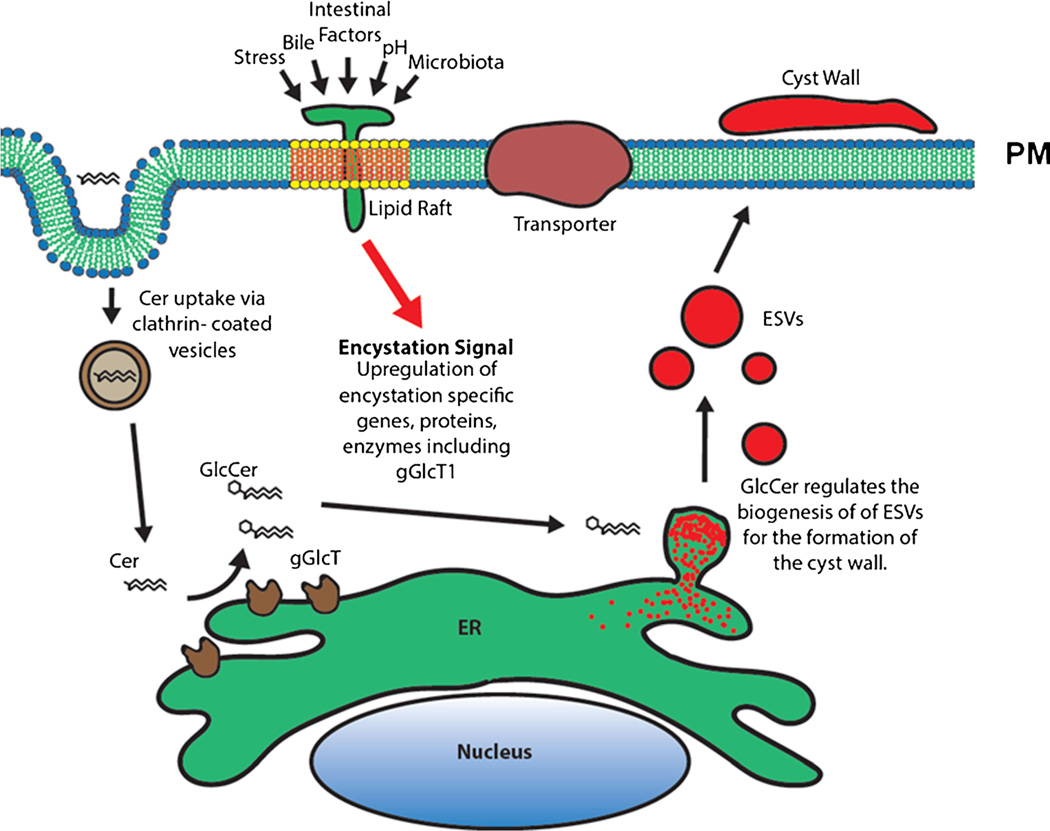Fig. 2.
Hypothetical model showing that giardial lipid rafts are activated by various activators present in the small intestine and generate downstream signals that upregulate encystation-specific genes and proteins, as well as giardial glucosylceramide transferase-1 (gGlcT1). gGlcT1, located in the endoplasmic reticulum (ER), uses ceramide (Cer), scavenged by the parasite from its environment, and produces glucosylceramide (GlcCer). GlcCer then induces the biogenesis of encystation-specific vesicles (ESVs). ESVs transport cyst wall proteins to the plasma membranes (PMs) and form the cyst wall (shown in red)

